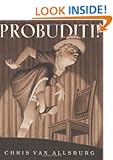Having enjoyed the benefits of 10 years of research and practice, when doing a read-aloud, I have become a master at building up to a "cliffhanging moment" and stopping abruptly, a technique that I have consistently leaves listeners hungry, literally begging for more. Television executives know a little something about building anticipation for the next episode -- nobody did it better than the creators of 24, despite the fact that the general story line was fairly predictable: Jack Bauer was sabotaged by his superiors, betrayed by his trusted associates, falsely branded as a criminal, tortured, and brought to the brink of death, but everyone knew that he would still manage, somehow, to anonymously save the world from total annihilation.
Based on his clinical practice as a neurologist, as well as reading and personal experience, which runs both broad and deep, in The Tell-Tale Brain, Dr. V. S. Ramachandran has extrapolated "nine laws of aesthetics" that follow from a "neurobiological view of aesthetics." (Ramachandran, pp. 200-201, 2011). The idea of a "science of aesthetics," as Dr. Ramachandran calls it, sounds like an oxymoron, but the possibility of applying nine principles for attracting and holding student attentions, in order to be more successful in my efforts to maintain student attentions long enough for them to process required content, captured my imagination.
The other day, instead of reading Chris Van Allsburg's Probuditi! from cover to cover, instead of losing the attention of half the class of Kindergarten students along the way, and wondering why, why, why had listeners been such a rude and unappreciative audience, like a maestro, I led listeners to the moment of climax, casually paused, reviewed the build up of tension in the story, connected the conflicts of the major characters to their own personal experiences of sibling rivalry, then elicited predictions about what everybody thought might happen next. Instead of slogging through to the end, as I might have done as a new teacher, I launched into the mini-lesson about the sight words, "was" and "that," energetically modeled how students might use each of these two sight words in a different sentence, briefly illustrated the story, (straight out of Lucy Caulkins,) then promptly sent students off to their seats to write their sentences. As I quickly sent students tiptoeing to their seats, several students wondered when we could finish the story. "After we have finished our work," I replied coyly.
That day, I was not consciously tapping into the principle of Peekaboo, i.e. "making something more attractive by making it less visible," (Ramachandran, p. 227, 2011), when I left students wondering what would happen after the birthday boy, Calvin, tried out hypnosis on his little sister, just like Calvin had seen a magician hypnotize a lady in the audience in a show earlier that day. Subconsciously, though, I was tapping into everything I know about the short attention spans of 5 and 6 year old students, avoiding many of the pitfalls I stumbled into as a new teacher.
When I first started teaching, a little over 10 years ago, my expectations about what students could do were skewed by my own personal experiences with reading. I had learned to read at age 3. I had tested in the 99th percentile nationally in reading during elementary school. As a new teacher, a career switcher in my forties, trained in literary analysis as an undergraduate at Georgetown University, I found it difficult to understand how anybody could struggle with reading, since my mom had force-fed me Hop on Pop to the point of tears at age 3. The example of my mom, who had taught herself to read behind the barbed wire fences of Internment Camps during World War II, made it hard for me to understand why anyone might avoid reading.
I can still visualize my mom taking me to Central Library, where I listening to Babar in the children's section. I can picture the little bookcase in my old room, packed with books of a variety of levels and genres, including Green Eggs and Ham, Where the Wild Things Are, Ferdinand, Stuart Little, The Golden Book of Mythology, LaRouse World Mythology, and Chronicles of Narnia. I had books on the human body, mathematics, as well as ready access to classic Peanuts and Mad Magazine. I had biographies of my favorite sports heroes. Sure, I loved to watch I Love Lucy!, Get Smart, Hogan's Heroes, Star Trek, and sporting events,
When I started teaching in Title I Schools, as a career switcher, I had neither the personal experience with any reading difficulties, nor any depth of understanding of the needs of children who had not been raised in in a print rich, literary environment, or even one rich with dinner conversations. My personal biases colored my expectations, which led to my frustration that students were not giving enough effort. Plus, I lacked the research basis to back up my "counter culture" views that the love of reading was being beaten out of boys because most of the books we provided them were boring -- boring, boring, boring!
Instead of cleverly using "the other child" strategy when correcting students, ten years ago I tended to embarrass students by confronting students misbehavior directly, which had the effect of shutting students down. Today, everything I do has a purpose, which is ultimately to engage students in the learning to the maximum extent possible.

No comments:
Post a Comment
My goal is to engage in civil conversation.